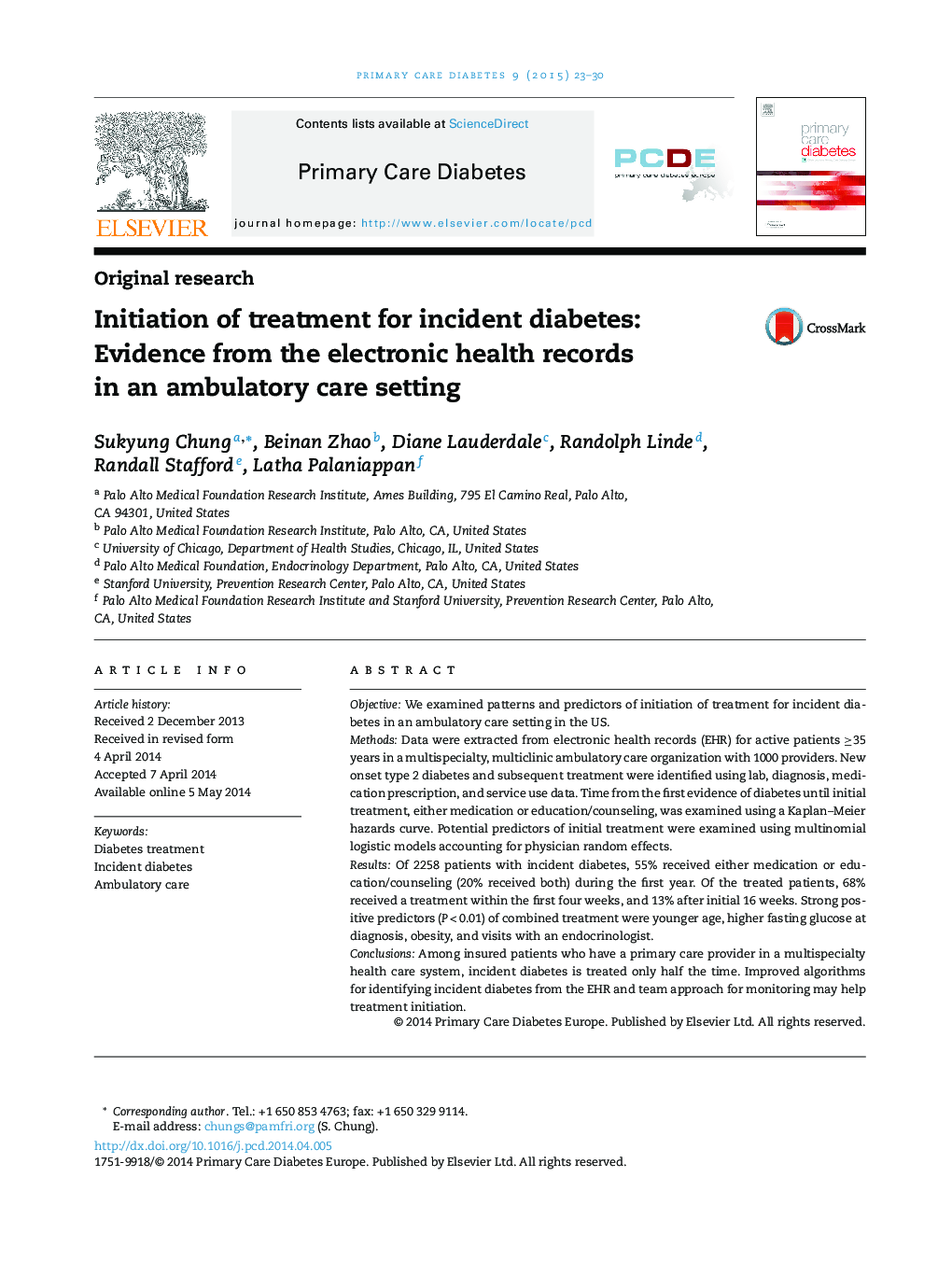| Article ID | Journal | Published Year | Pages | File Type |
|---|---|---|---|---|
| 2676074 | Primary Care Diabetes | 2015 | 8 Pages |
•We examined patterns of treatment initiation for incident diabetes in an ambulatory care setting in the US.•Diabetes onset and treatment were identified with information from electronic health records (EHR).•Among insured patients who have a primary care provider, incident diabetes is treated only half the time.•Of the treated, 68% received a treatment within the first four weeks, and 13% after initial 16 weeks.•Improved algorithms for identifying incident diabetes from the EHR and team approach for monitoring may help treatment initiation.
ObjectiveWe examined patterns and predictors of initiation of treatment for incident diabetes in an ambulatory care setting in the US.MethodsData were extracted from electronic health records (EHR) for active patients ≥35 years in a multispecialty, multiclinic ambulatory care organization with 1000 providers. New onset type 2 diabetes and subsequent treatment were identified using lab, diagnosis, medication prescription, and service use data. Time from the first evidence of diabetes until initial treatment, either medication or education/counseling, was examined using a Kaplan–Meier hazards curve. Potential predictors of initial treatment were examined using multinomial logistic models accounting for physician random effects.ResultsOf 2258 patients with incident diabetes, 55% received either medication or education/counseling (20% received both) during the first year. Of the treated patients, 68% received a treatment within the first four weeks, and 13% after initial 16 weeks. Strong positive predictors (P < 0.01) of combined treatment were younger age, higher fasting glucose at diagnosis, obesity, and visits with an endocrinologist.ConclusionsAmong insured patients who have a primary care provider in a multispecialty health care system, incident diabetes is treated only half the time. Improved algorithms for identifying incident diabetes from the EHR and team approach for monitoring may help treatment initiation.
